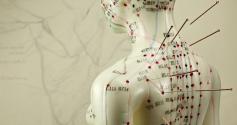Medical translation: why is accuracy vital?

In the medicine and medical devices field, translation plays a crucial role. Even a small error can have serious consequences: a misdiagnosis or an incorrect administration of treatment may put the patient's life at stake.
The safety of users and patients is paramount and cannot be overlooked. Therefore, the accuracy of translations is an absolute imperative to ensure their safety and compliance with current standards and laws.
Índice de contenidos
Index of contents
Index du contenu
Inhaltsverzeichnis
Indice dei contenuti
A highly technical and regulated field in Europe
Medical translation in Europe is subject to strict standards, including the MDR 2017/745 (Medical Device Regulation) for medical devices and IVDR 2017/746 (In Vitro Diagnostic Regulation) for in vitro diagnostic devices.
These regulations impose a set of strict requirements, particularly with regard to technical documentation, labelling, and instructions for use. The primary purpose of these documents is to inform users and patients, and to support them in the use of these devices. When a manufacturer wishes to place its product on the market in several countries, documentation must be provided in the official languages of each country to make this information accessible and understandable to the local population.
It seems only logical that a device manufactured in China and placed on the French market should be supplied with an instruction manual in the language of the country.
The following documents are the most commonly translated:
- Clinical protocols and study reports
- Leaflets and labelling of medicines and medical devices
- Training documents for healthcare professionals
- Marketing authorisation applications (MAA)
- Documents required for registration in the European Database on Medical Devices (EUDAMED)
Notified bodies, which are responsible for assessing the conformity of medical devices in Europe, require that the documentation submitted fully complies with current linguistic and technical standards.
Through documentation review and audits, the notified bodies validate the regulatory compliance of the device and grant the right to affix the "CE" marking. Therefore, an inaccurate translation can lead to the rejection of documentation and cause a delay in making products available on the market.
The consequences of translation errors
Risks for users
A poor translation can result in misunderstandings and errors in use, potentially leading to serious incidents for users and patients. Depending on the device in question, it could put their life at risk.
Legal issues and reputational damage
Translation errors can also lead to lawsuits that can affect the various economic operators of medical devices, damaging their credibility.
Failure to comply with the requirements of notified bodies or poorly translated documentation submitted to EUDAMED can delay the marketing of a product. These delays are unfortunate and can have significant economic consequences.
The skills needed for accurate translations
To avoid the issues mentioned above and comply with legislation, manufacturers are advised to ensure that the translations meet specific prerequisites. Thus, the person or entity providing the translation must:
- Have scientific and medical expertise: understanding medical terms and concepts is essential for an accurate translation.
- Have a perfect command of the source and target languages: some expressions may not have a direct equivalent, hence the importance of rigorous adaptation.
- Have knowledge of local and international regulations: in particular the MDR, IVDR, and the requirements of notified bodies.
- Be familiar with EUDAMED: understand how data and documents should be submitted to ensure compliance.
Using the services of a translation company or a professional translator with experience in the medical field is a safe way to ensure maximum quality and compliance.
The importance of tools and validation
To ensure the accuracy of translations, medical translators use specialised tools:
- Terminology databases (e.g. MedDRA, EMA, WHO).
- Computer-assisted translation (CAT) software to ensure consistency.
- Editing/proofreading by medical and regulatory experts for final validation.
Conclusion
Medical translation in Europe requires an extreme level of accuracy, as the slightest error can have harmful and even tragic consequences for users. With strict regulations like the MDR and IVDR, and growing compliance requirements, working with specialist translators and employing the right tools are essential to ensure accurate and compliant translations.
If you need a translation company specialising in the medical and pharmaceutical fields, contact AbroadLink today!
Other articles you may be interested in:

With a background in Marketing and International Trade, Alex has always shown a passion for languages and an interest in different cultures. Originally from Brittany, France, he has lived in Ireland and Mexico before spending some time back in France and then settling permanently in Spain. He works as Chief Growth Officer at AbroadLink Translations.



Add new comment